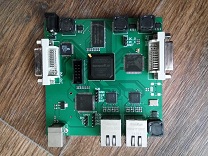These devices were 100% developed by me, including schematic design in Altium Designer, PCB layout, manual soldering of prototypes, and programming of both FPGA and microcontrollers. The development took place at home, outside of working hours, but later some of these devices were sold and went into mass production (over 1000 units as of 2023), and to the best of my knowledge, they are still actively and successfully used today.
Nano Switch Light
Nano Switch Light offers low-cost IP traffic control between channels, featuring 12 × 10 Gbit/s ports. The device is designed for routing, traffic balancing across channels (based on flow parameters), channel aggregation, rule-based filtering, channel redundancy with automatic failover, NetFlow generation, and extraction of information required for traffic correlation before and after NAT, etc. All processing is performed on FPGA, ensuring maximum throughput and ultra-low latency. The device uses DDR3 1600 MHz for temporary packet buffering when they cannot be sent immediately (for example, in aggregation mechanisms). Recommended as a complementary solution to systems performing DPI (Deep Packet Inspection), DDoS filtering, and other types of network analysis.
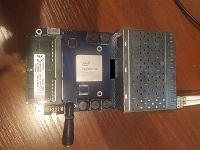
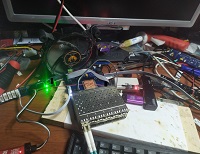

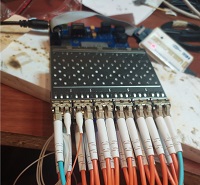
AntiNat
Anti-NAT is a versatile, cost-efficient, high-performance PCIe network card designed for traffic analysis and intelligent routing. Originally developed solely for Anti-NAT functionality, the device’s capabilities have since been significantly expanded while using the same hardware platform:
- AntiNat - detects how source IPs and ports of TCP/UDP packets are modified by NAT
- Failover — sends traffic to a DPI server only when it is operational; if the server fails, traffic bypasses it automatically, ensuring uninterrupted flow
- STM1–64 Parsing — supports stream decoding directly in FPGA, extracting payload data and delivering it to the host via PCIe
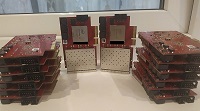
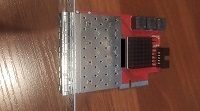
E1-48
E1-48 (duplex) — analysis of E1 channel copies (identifying the E1 period, parsing HDB3, transferring payload to the host). Device was designed for minimal cost and maximum E1 channel capacity on the board, cost per E1 port is 20 times lower compared to similar solutions from Sangoma Technologies devicesAlthough the E1 protocol is outdated, it is still widely used, and the number of E1 channels often reaches thousands.


STM-24
STM 1-4 analysis — processing a copy of STM 1–4 traffic from 24 channels, including: STM period detection, STM4-to-STM1 conversion, STM1-to-VC4 parsing, and transferring the extracted data to x86/64 systems via two 10 Gbit/s ports for further analysis.
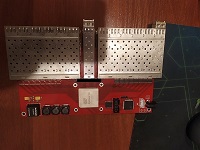
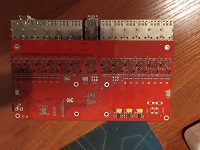
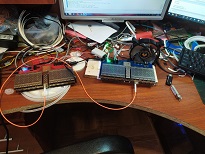
TAP-1000
TAP1000 — a device designed to provide a secure line by integrating inline into the channel and creating a traffic copy for 1 Gbit/s copper media. Special attention was given to ensuring security, if something inside the device fails or if power is simply cut off, it will maintain the channel directly, bypassing this device. It is actively used for capturing SS7 traffic copies.
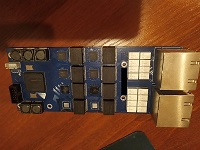
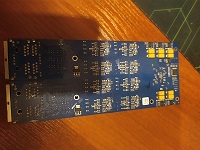
Remote Control
Remote management capabilities: this device uses an FPGA to capture traffic via DVI (inline connection) and an STM32 microcontroller for USB connection to a computer and emulation of mouse/keyboard. Also, STM32 provides a web interface for accessing the device’s screen, receiving commands from the keyboard/mouse, and transmitting them to the controlled computer. The device was not released to mass production due to the transition to the Aspeed 2500.
